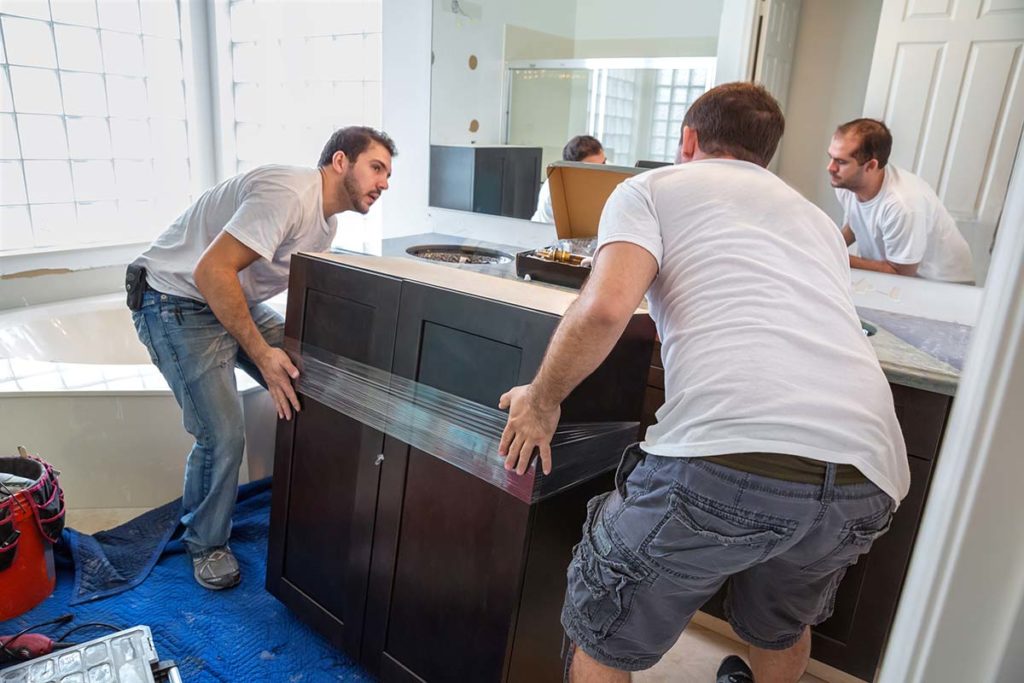From something as simple as sensor lights to adding another bathroom, there are options and considerations for anyone who intends to stay in place. But without a clear picture of what you really want to do with your project, you may find that the costs continue to rise and the needed changes either don’t get completed or aren’t what you really expected. Changes have to be effective – and sometimes this means completely revamping an existing space to accommodate what’s needed in the future.
Safety and Convenience Are Both #1
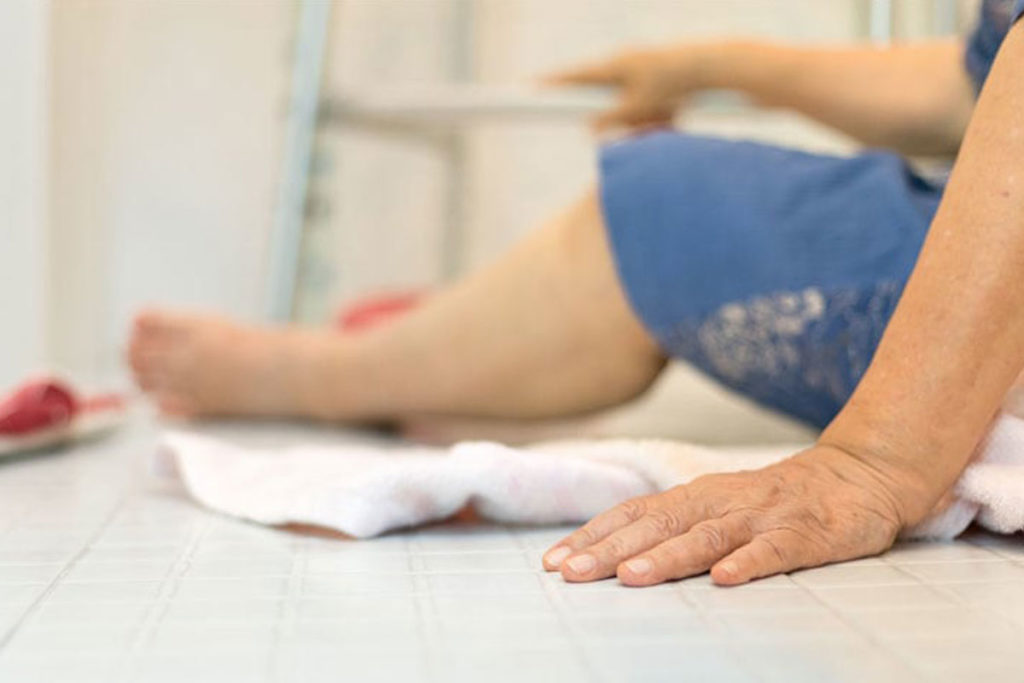
Convenience issues are safety issues. You must be able to move easily and safely to each part of the facilities, and you need to be able to do it conveniently enough that you are not tempted to do unsafe things. If your current bathroom is not safe, or you find that it is inconvenient, it may be time to seriously look at a remodel.
Especially if you live alone, falling in the shower or the bathroom can be physically devastating. It is also a frightening experience, and a lot of time can lapse before anyone discovers that you need help. Sometimes you can address this problem without making significant changes to your property. These include alarm systems that alert people to a fall or arrange for someone to check on them at least once or twice a day. But not everyone who ages in place has these kinds of options.
A First Floor Accessible Bathroom
Keep in mind that the first floor bathroom must be accessible, and that means a bigger space that can accommodate a walker or a wheelchair.
If your house has stairs, one of the best ways to reduce risk is to have a bathroom on the first floor. Some two-story homes, especially in certain parts of the country or in older, more established neighborhoods, have only one bathroom: upstairs, close to the bedrooms. While that made sense years ago, it also created problems for anyone who had trouble climbing stairs. Chair lifts can help with this, but a bathroom on the first floor is very important when you’re aging in place.
If your home doesn’t have a lot of space on the first floor, getting a bathroom there can seem difficult. But there are generally ways to make space. You may need to give up part or all of a bedroom, sun porch, patio, office, or another small room that you aren’t really using. A large closet can also be part of a bathroom conversion if there is enough room. But keep in mind that the first-floor bathroom must be accessible, and that means a bigger space that can accommodate a walker or a wheelchair. With a larger space, your first-floor bathroom will be much safer and easier to use as you age.
A Step-In Tub or a Curbless Shower?
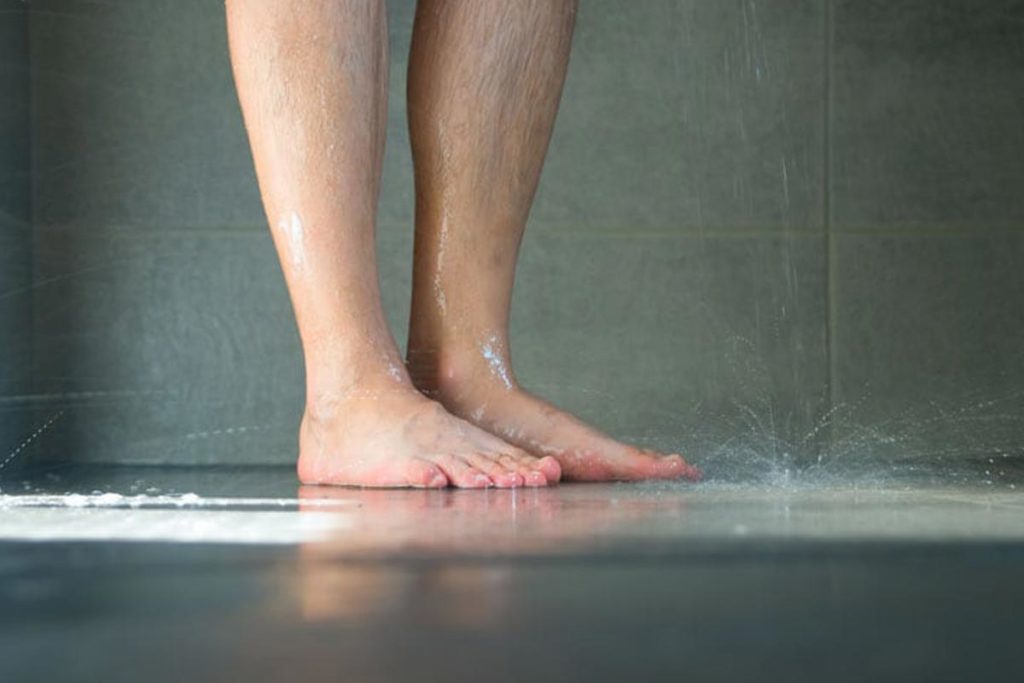
Stepping in and out of the bathtub isn’t an issue for most younger people, but it may be riskier as you age. Lifting your foot up and over the tub edge, and the balance required to do that can become difficult in later years. But some people still want a step-in tub for a number of reasons. Others may prefer a stand-alone shower that doesn’t have a tub attached to it. Then there are curbless shower options no lip on the edge of them, so you can roll a walker, wheelchair, or transfer chair right across the edge. It makes getting in and out very easy and can reduce the risk of falling.
Look at getting in and out of the tub, so you can pick a way to make your entrance and exit more stable.
If you are certain that a step-in tub is what you want, be sure it’s larger enough to accommodate you and anything you need, such as a place to sit down. Also consider the height of the tub edge, whether you’ll have a curtain or doors on it, and what you can do to make the space inside safer. You’ll also want to look at getting in and out of the tub, so you can choose a way to make your entrance and exit more stable. Many people put up railings and bars, as these can provide stability and make it less stressful to get into and out of a step-in tub as you age and your balance isn’t as strong as it used to be.
Additional Tub/Shower Options
Make sure that your bathroom is set up for things that could be an issue in the future, as opposed to what you may be capable of doing in the present.
If a step-in tub isn’t for you, and you aren’t sure you want to have only a shower, a walk-in tub might be right for you. You walk in and close a door with a watertight seal. Walk-in tubs give you the benefit of being able to sit down in a bathtub and relax, but still being able to get in and out of the tub much more easily. Many elderly people use these kinds of tubs simply because they offer so much value when it comes to a relaxing bath that can help ease aches and pains. While these tubs generally require a separate shower, a walk-in shower tub combo has a standing shower head.
Both are worth considering if baths are something you don’t want to give up.
Cost and space will be factors for these tubs, but many are affordable and don’t have to be as long as a standard bathtub. That means you can put them in a smaller space in most cases, which could allow for the use of this type of tub in a bathroom remodel or the creation of a new bathroom, such as on the first floor. Jetted tubs are also a consideration, but any tub may become harder to get in and out of as you age. Make sure that your bathroom is set up for things that could be an issue in the future, as opposed to what you may be capable of doing in the present.
Seats, Stools, and Benches for Showering and Transferring
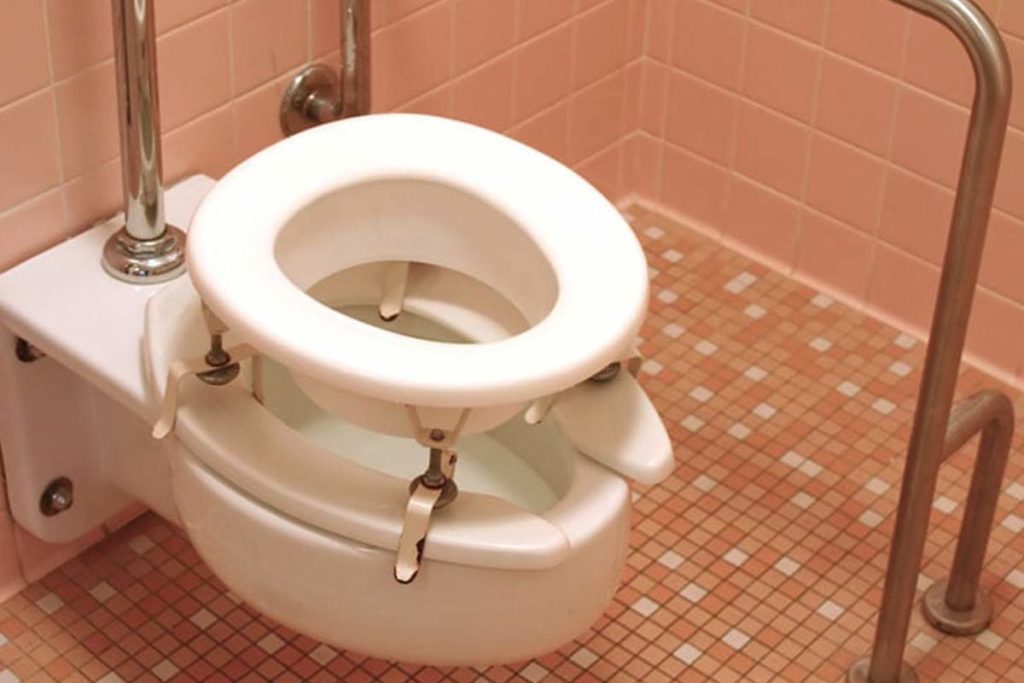
No matter how you decide to remodel your tub or shower, there are choices to be made. Some seats, stools, and benches are designed to be used right in the shower or tub as built-in features, while others are used as removable pieces. What you choose will depend on a number of factors, including the space you have available, whether there are features already built into the tub or shower, and how you may need to transfer from one place to another.
Sometimes it makes much more sense to have a moveable chair or bench, so you can enter and leave the shower or tub more easily. In other cases, it may be better to have a built-in option to which you can transfer. The only problem with making this choice is that you don’t absolutely know what specific issues you will have – nor the options you will prefer – in the future. Built-ins, along with enough room for removable selections, can be the way to go If you have the space. This gives you the highest number of choices possible as your needs change over time.
Removable and Adjustable Shower Heads
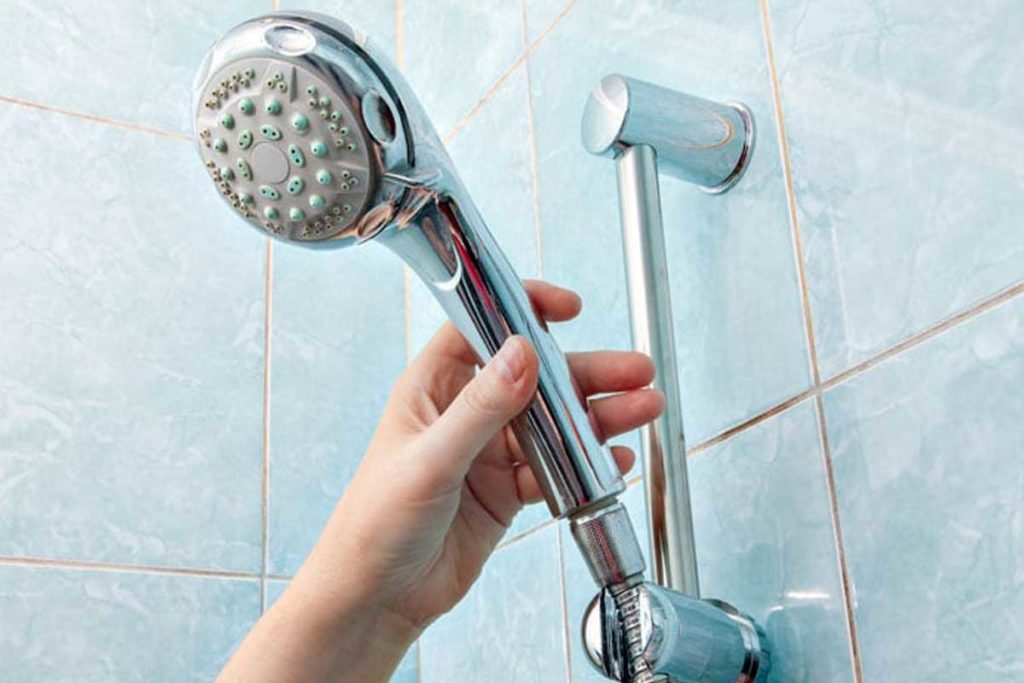
Not all shower heads are created equally. Some offer just a standard spray, while others do so much more. The angle of the showerhead also matters, as some of them are designed to rain down water and others shoot water at more of an angle. Both can be good options, and choosing a shower head that allows you to have a selection of sprays in the future can help reduce the chances that you’ll need to make changes or upgrades later. Rain heads can be good for washing if you need to sit down during your showers, but they may also put too much water straight down onto you, and that might not be comfortable.
Choosing a shower head that allows you to have a selection of sprays in the future can help reduce the chances that you’ll need to make changes or upgrades later.
You may also want to consider a removable shower head, so you can move it around and wash it more easily. These showerheads have a hose that hooks into where the shower head would normally be, with the actual spray and adjustments are on the other end. Since you can move this around to where you need it and change the spray type and strength, it’s easier to wash and get clean while still being comfortable and safe. These are also easier to replace at a later date if necessary. They also aren’t generally expensive options, so they can be done on a budget as you work to remodel your space.
Renovating a Toilet: Conversions and Add-Ons
There are two common “aging in place” issues with toilets. First, getting up and down from the seat may become more difficult. Second, many bathrooms aren’t equipped to help people who need extra assistance getting up and down. Some people may have trouble keeping themselves as clean as they did when they were younger, and they may struggle to handle that issue without dealing with the embarrassment of asking other people to help them in the bathroom.
If you’re finding yourself in that situation or you’re looking for a way to avoid those kinds of issues when you get older, there are conversions and add-on options for you to consider. Most toilets are set at a standard height, but there are some available that are designed for the handicapped. They are also great for mobile elderly people because they are taller than average. That makes it easier to sit down and get back up again since you don’t need to sit so low. While this may not be enough depending on your health and mobility, it’s certainly a start when considering your options.
Another thing to consider if you don’t want to replace your current toilet is an add-on piece that simply attaches to the seat and makes it taller. If you share your bathroom with someone else who doesn’t need a taller toilet, or if you have a newer or more expensive model you just don’t want to replace right now, an add-on can be a good compromise and make things easier for you if and when you need the extra help. Installing grab bars or rails next to the toilet can also help you stand up and sit down more easily, whether or not you choose to change the toilet’s height.
Most toilets are set at a standard height, but there are some available that are designed for the handicapped.
Another add-on to consider is an option to help you stay cleaner. There are add-ons that can provide you with the basic feel of a bidet, so you can get cleaner without as much effort. Having something like this can make it easier for an elderly person to stay clean, and that can not only help them feel better about caring for themselves but can also reduce the risk of infection and related problems. If you plan to age in place, especially if you’ll be living alone, being able to keep clean and healthy for as long as possible matters. With all the available options today, you’ll have choices to help you care for yourself.
The Vanity: Countertop Height and Under-Sink Clearance
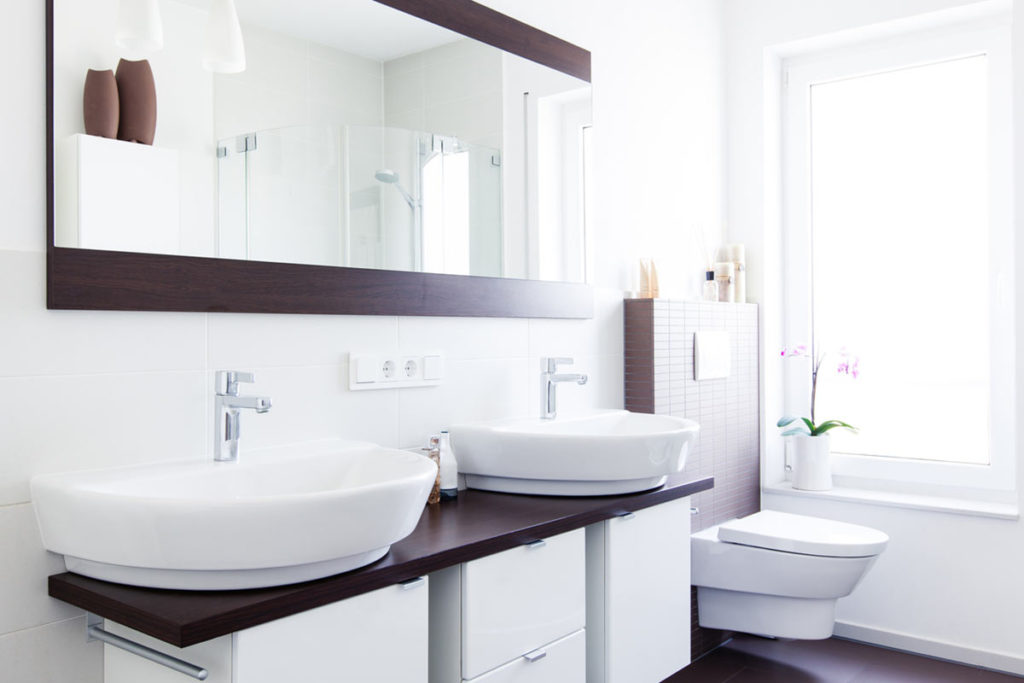
If you ever use a wheelchair, you’ll want that space underneath the vanity so you can roll up to the sink and do things like washing your hands and brushing your teeth. That means making the sink counter a little lower than average, but it doesn’t take much to get used to, and it’s well worth it for future planning.
Be sure to make the countertop a size that’s easy to reach, even at the back, and adjust the placement of the mirror where you can see it clear whether you’re sitting or standing. That way you’ll be ready for the way things currently are, and also for the way they could potentially be in the future. It’s hard to plan for every eventuality, but the vast majority of aging issues can be planned and prepared for. That will give you peace of mind, and can also help you feel more confident about staying in your home.
Widening the Bathroom Door
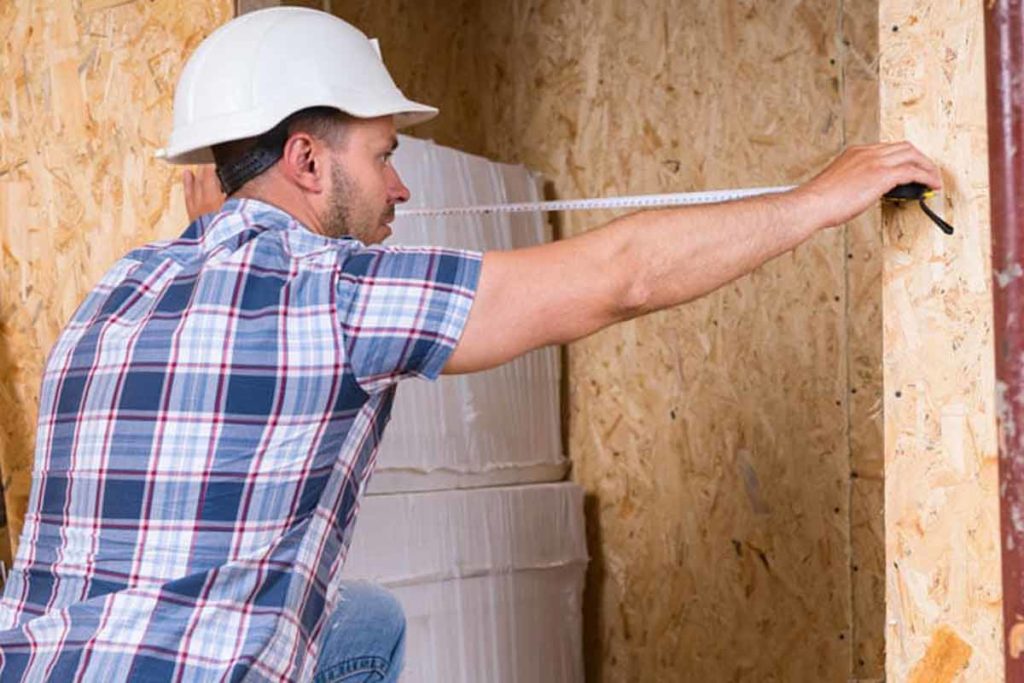
Not all bathroom doors are wide enough to accommodate a wheelchair or a walker. Most will allow for what’s called a transfer or transport chair, but that isn’t the same. Even with a transport chair, you would need someone to wheel you around. A traditional wheelchair, on the other hand, allows the user to move and steer themselves using arm strength. Fortunately, it’s not generally that hard to widen a bathroom door. Unless it’s located right up against a wall where things really can’t be moved, you should be able to expand it a few inches and allow for the level of clearance you need. Which side of the door you expand doesn’t matter.
The key is getting the door frame the exact right size so that the door will close properly. Since doors come in standard sizes, you’ll want to be sure what size you need and how big the entire opening must be to accommodate a wheelchair. You may never need to be in one, but if you do need one at a later date, you’ll be ready and won’t have to find another place to live or somewhere else to stay while changes and accommodations are made. A wider bathroom door is also easier to accommodate a walker, cane, or crutches. No matter what type of aid you may need in the future, you’ll be able to access your bathroom.
Extra Room for Wheelchair or Walker Clearance
It isn’t just the door that needs extra clearance. Everything you do in the bathroom will require extra room for a walker or wheelchair or any other type of aid you may need to get around. That could mean expanding the current bathroom you have, or simply rearranging it so it works better for someone who needs more space in which to maneuver. No matter which you choose, adequate clearance is essential. It’s not just about getting a wheelchair into the space, but about having enough room to transfer to the toilet and tub or shower, as well as turning around without hitting walls.
Thinking carefully through these clearance issues will help provide for both safety and comfort for you no matter how you may need to get around.
A tight space can feel claustrophobic, especially for someone who may not get around that easily. This may make it necessary to move a wall to create a larger bathroom to ensure an adequate turning radius for a wheelchair and plenty of space for someone with a walker to get around the bathroom safely. Thinking carefully through these clearance issues will help provide for both safety and comfort for you no matter how you may need to get around.
Grab Bar and Rail Installation

One of the most important things you can do early on in your remodeling project is added grab bars and rails. These can be installed nearly anywhere, and they should be mounted into studs to ensure that they’re as secure as possible.
Larger rails and bars that are made of metal are generally the best option because they support the weight more easily and are also not difficult to clean. On the side (or both sides, depending on the layout) of the toilet, in the shower or tub, and when getting out of the shower or tub are good places for these bars. Sinks and vanity areas are not as common, but rails can be used anywhere they’re needed.
There are small bars that can fit into tight spaces and much larger bars that are designed to be used in showers and next to toilets when there’s plenty of wall space available. No matter how you plan your bathroom remodel, you’ll want to allow room for these bars. You can then create a look you want without compromising security and safety now or in the future. Consider all the places that these bars or rails can and would possibly be used, and then go ahead and add them. You’ll have less to worry about in the future, and won’t need to stop and add a bar later, since they’ll already be in place for you.
Non-Slip Floors, Mats, and Rugs

You’ll need to consider a floor that isn’t slick, along with mats and rugs that can help protect you. Certain types of tile and other floor coverings are slippery and should be avoided. Marble, for example, can become very slick with just a little bit of water. But there are tiles available that have a rougher surface. They’re comfortable to walk on, but not as slippery. You may also want to consider laminate, as it’s generally less slick than tile would be, whether it’s wet or dry.
While mats and rugs can protect the floor and keep it from being too slick, they can also be tripping hazards.
While mats and rugs can protect the floor and keep it from being too slick, they can also be tripping hazards. Consider thinner rugs that don’t bunch up easily, along with rugs that have a rubber backing and won’t slide around. The mat in your bathtub or shower should stick tightly so walkers and wheelchairs won’t get caught on it. You can also choose a tub or shower with a textured bottom to avoid sliding, and you won’t need to use a mat inside.
Some bathrooms are not right for rugs and mats of any kind. Sometimes even the best options can still get bound up in a wheelchair or the edge caught by a walker. This makes them more frustrating than helpful, and also causes a risk of falling. Mats and rugs may not be suitable for smaller bathrooms where there isn’t much room to maneuver. The tighter the space, the better off you may be with simply a good flooring product that won’t get too slippery if some water gets onto the floor. Some experimenting may be necessary for this area.
Functional Fixtures and Accessories
As you plan your remodeled bathroom, sit where you’ll be sitting, stand where you’ll be standing, and consider the challenges you would face. Then make changes as the remodel continues.
All of the fixtures and accessories in your remodeled bathroom should be working well and properly. But will they work for you if your circumstances change? Can you still reach the faucet if you’re sitting in a wheelchair? Can you get things out of the cabinets? What about the shower shelves or cubbies? Are they reachable from the built-in bench? If not, you could put yourself at risk for a fall by straining to reach for something. Instead of having that risk, it’s better to focus on how to adjust fixtures and accessories to accommodate issues that may arise in the future.
Lower cabinets and pull-down shelves can make it much easier to reach items if you’re sitting down. You’ll also want to be able to reach all the faucets and controls in the tub/shower and at the sink if you’re in a wheelchair or other type of seat, or if there’s a walker between you and what you’re trying to access. Everything in the shower should be close by, so you don’t have to reach too far or move around too much, either. As you plan your remodeled bathroom, sit where you’ll be sitting, stand where you’ll be standing, and consider the challenges you would face. Then make changes as the remodel continues.
Even Light Fixtures Matter
Overhead lights can go out, and changing a light bulb may be very hard to do when you can’t safely reach the fixture. While there’s nothing wrong with overhead lighting in the bathroom, you’ll also want to consider other lights that can help you see if an overhead bulb goes out. Sensor lights that come on when you enter the bathroom and go out when you exit can be a great way to save on electricity and reduce the chances of you forgetting to turn a light off. It’s also easier if you have trouble getting around, as letting go of a walker to turn on a light switch could become a problem over time.
In addition to sensor lights, consider vanity lights that are set lower, on the sides of the mirror instead of over the top of it. Also consider some lights that are placed lower on the walls, such as sconces or even built-in lights that have covers over them and light up the wall instead of shining down from the ceiling. There are a lot of spaces that these lights will work well in, and they’re worth considering when it comes to having enough light to see and also making sure that you can access the lights to care for them properly. A well-lit bathroom is a safer and more comfortable bathroom.
DIY vs. Contractor: Which Projects Can You Do Yourself?
Whether you hire a contractor or do things on your own will depend on several factors. They include your current age, how much help you have to complete a bathroom remodel, and whether you (or your helpers) have the knowledge of things like plumbing and electrical that they will need to work with. In many cases, a DIY project is possible if it’s on a smaller scale. For much larger projects, you may be better off choosing a contractor to complete the renovation for you. Of course, you can save a lot of money if you do things on your own, so you may want to look for a balance between what you do and what the contractor does.
In many cases, a DIY project is possible if it’s on a smaller scale. For much larger projects, you may be better off choosing a contractor to complete the renovation for you.
Generally, tasks like painting, changing a light fixture or a showerhead, and even changing out a sink, faucet, or toilet aren’t too difficult if you’re handy with tools and have the strength. But that doesn’t mean you can’t get a contractor to do these things for you. You’ll want to be safe and careful with anything you do on your bathroom remodel. Installing grab bars and rails is another common DIY project, and can often be done without the help of a professional. However, don’t hesitate to get help if you don’t feel comfortable doing those things on your own.
Peace of mind is more important than the cost, as long as you can safely afford your bathroom remodel. You’ll probably want to hire a contractor if you need to move plumbing or electrical around since that can be difficult and dangerous. You may also need permits, and it’s sometimes easier to just let a contractor handle all of those things. New flooring, a need to move a vanity or a wall, or any type of framing or re-framing of a space or moving of facilities will generally need a contractor, as well. It’s not something most people will be comfortable doing on their own.
Be sure to get prices from several contractors. Talk with the professionals you get bids from about what you can do to lower the cost. For example, can you do some tear-out of what’s currently there, supply materials, or anything else that will reduce your overall costs? Many contractors will work with customers on an “aging in place” remodel because they see the importance of that person’s continued independence. If you find a contractor that won’t let you “help” to save money, seek other bids from handymen and additional contractors. That may help you save a lot of money in the long run, and do some of the work yourself.
Ranking What’s Really Important

In any project, the key to getting it done satisfactorily is knowing what matters most. You may have some very important aspects of the bathroom remodel that must be addressed right away, and some that aren’t as significant. You may also find that certain options don’t work for you or your space, and aren’t needed at all. Setting things up so that additional items can be added later is a good way to prioritize if you don’t have the funds or the time to do everything you want right now. That can take some careful planning, but it’s generally worth the effort if it makes things easier both now and at a later date.
Make sure you can afford to get the bathroom remodeled to the point where all the facilities are usable. There are a lot of things that can be added on over time, so don’t feel like you have to do everything at once if that’s not realistic.
Generally, the most important projects are those that are going to affect safety in a big way or those that allow access to the facilities. Widening the doorway, enlarging the actual space if necessary, and rearranging the layout to accommodate walkers and wheelchairs should take priority. So should grab bars and rails, as well as a tub or shower that’s easy to use and safe to operate. But whatever parts of the project you choose to do first, changing a layout or adding more space to a bathroom should generally be done first. These involve plumbing and electrical, which, again, are usually not DIY projects.
If you’re limited on funds and/or time, you may also need to leave some parts of your project for later. Make sure you can afford to get the bathroom remodeled to the point where all the facilities are usable. Better light fixtures and a new vanity top can wait. So can painting and other types of decorating. There are a lot of things that can be added on over time, so don’t feel like you have to do everything at once if that’s not realistic. Especially for a younger person who will age into the remodeled bathroom in time, there’s time to do things now and in the future.
ADA Recommendations
The American Disabilities Act website offers suggestions to make restrooms are handicapped-accessible, which also makes them elderly-accessible even if you never have specific mobility issues. Most of these apply to commercial spaces, but some are useful ideas for your home bathroom remodel. An “ADA-compliant” bathroom can ensure that you will have enough space around the toilet, under the vanity, and in and around the shower. You’ll have fewer risks with making something too small or getting something that doesn’t work well.
With a little time and planning, you’ll have a bathroom you can enjoy for years to come, and one that you’ll be able to use with ease and safety as time goes on.
Before you start reading ADA pamphlets or talking with contractors, make sure you take the time to focus on your goals for this project. That way, you can choose the things that are most important to, you and have a contractor that you trust to get started on turning your bathroom into the space you really need. Whether you’re accommodating the needs you have now or planning for the future, there’s no better time to get started, so you can have the safety and comfort, as well as the design and style, you’re looking for.
There’s no reason most people can’t age in place if that’s what works for them. You can be one of them as long as you can have the kinds of facilities you need to be safe and comfortable in your home. With a little time and planning, you’ll have a bathroom you can enjoy for years to come, and one that you’ll be able to use with ease and safety as time goes on.
Do you want to cite this page? Use our ready-made cite template.
